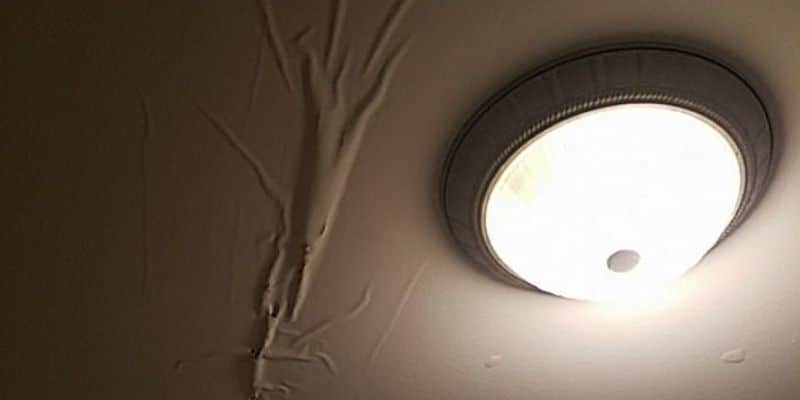Uncovering the Top Six Causes of Water Leaks in Your Home
Uncovering the Top Six Causes of Water Leaks in Your Home
Blog Article
Just about every person is bound to have their own way of thinking when it comes to Most Common Causes of Leaky Pipes.

Leaks not only create waste of water however can also create unnecessary damages to your house and also promote undesirable natural growth. However, water leakages may go unnoticed because most of the pipework in our home is concealed. By looking and also recognizing for day-to-day circumstances that trigger leaks, you can safeguard your residence from future leakages as well as unnecessary damages. Today, we will check out 6 leakage triggers that might be causing your pipelines to drip.
Intruding origins
The majority of water leakages start outside the home instead than inside it. You may observe wet patches or sinkholes in your lawn, and that could imply that tree roots are attacking water lines causing water to leak out.
Rusty water systems
As time goes by, your plumbing system ages and also corrosion such as corrosion may start gnawing the pipes. This may be the source of discoloration or bending on your water pipes. This requires an examination with your plumber promptly. If our plumbing system is old, consider replacing the pipelines because they go to a greater risk of deterioration than the more recent models.
Faulty Pipeline Joints
Pipe joints can degrade over time, resulting in water leakages. If you have noisy pipes that make ticking or banging noises, particularly when the hot water is turned on, your pipe joints are possibly under a whole lot of stress.
Immediate temperature adjustments.
Extreme temperature adjustments in our pipes can create them to increase and acquire unexpectedly. This expansion and tightening may create splits in the pipelines, specifically if the temperature are below freezing. It would certainly be best if you watched on exactly how your plumbing works. The visibility of the formerly pointed out scenarios often indicates a high threat.
Poor Water Connectors
At times, a leakage can be caused by loose tubes as well as pipes that provide your appliances. Generally, shifting is what triggers the loose water Links. You might find when it comes to a cleaning device, a hose may spring a leak due to drinking during the spin cycle. In case of a water links leakage, you may notice water running straight from the supply line or puddles around your appliances.
Obstructed Drains
Blocked drains could be irritating and also inconveniencing, however they can in some cases wind up causing an overflow causing burst pipes. Keep getting rid of any products that might drop your drains that might obstruct them to prevent such inconveniences.
All the above are causes of leaks yet not all water leaks arise from plumbing leakages; some leakages might come from roofing system leakages. All leaks need to be repaired immediately to prevent water damage.
Leaks not only cause waste of water however can also cause unnecessary damage to your house as well as promote undesirable natural growth. By recognizing and looking for day-to-day situations that cause leaks, you can shield your home from future leakages and also unneeded damages. Today, we will look at six leakage causes that might be creating your pipes to trickle.
At times, a leakage can be triggered by loosened tubes as well as pipes that provide your appliances. In instance of a water links leak, you might notice water running directly from the supply line or pools around your home appliances.
How To Check For Water Leak In Your Home
How To Check for Leaks
The average household's leaks can account for nearly 10,000 gallons of water wasted every year and ten percent of homes have leaks that waste 90 gallons or more per day. Common types of leaks found in the home are worn toilet flappers, dripping faucets, and other leaking valves. These types of leaks are often easy to fix, requiring only a few tools and hardware that can pay for themselves in water savings. Fixing easily corrected household water leaks can save homeowners about 10 percent on their water bills.
To check for leaks in your home, you first need to determine whether you're wasting water and then identify the source of the leak. Here are some tips for finding leaks:
Take a look at your water usage during a colder month, such as January or February. If a family of four exceeds 12,000 gallons per month, there are serious leaks.
Check your water meter before and after a two-hour period when no water is being used. If the meter changes at all, you probably have a leak.
Identify toilet leaks by placing a drop of food coloring in the toilet tank. If any color shows up in the bowl after 10 minutes, you have a leak. (Be sure to flush immediately after the experiment to avoid staining the tank.)
Examine faucet gaskets and pipe fittings for any water on the outside of the pipe to check for surface leaks.
Undetected water leaks can happen without the home or business owner even realizing. If you suspect a water leak, but not able to find the source. It is time to contact a professional water leak detection service, The Leak Doctor.
How To Find a Water Leak In Your Home
https://www.leakdoctor.com/blog/How-To-Check-For-Water-Leak-In-Your-Home_AE197.html

Hopefully you enjoyed reading our excerpt about How to detect water leaks in your home. Thanks for finding the time to read through our piece of content. If you please set aside a second to distribute this page if you enjoyed reading it. We truly appreciate reading our article about Common Water Leaks In House.
Additional Resources Report this page